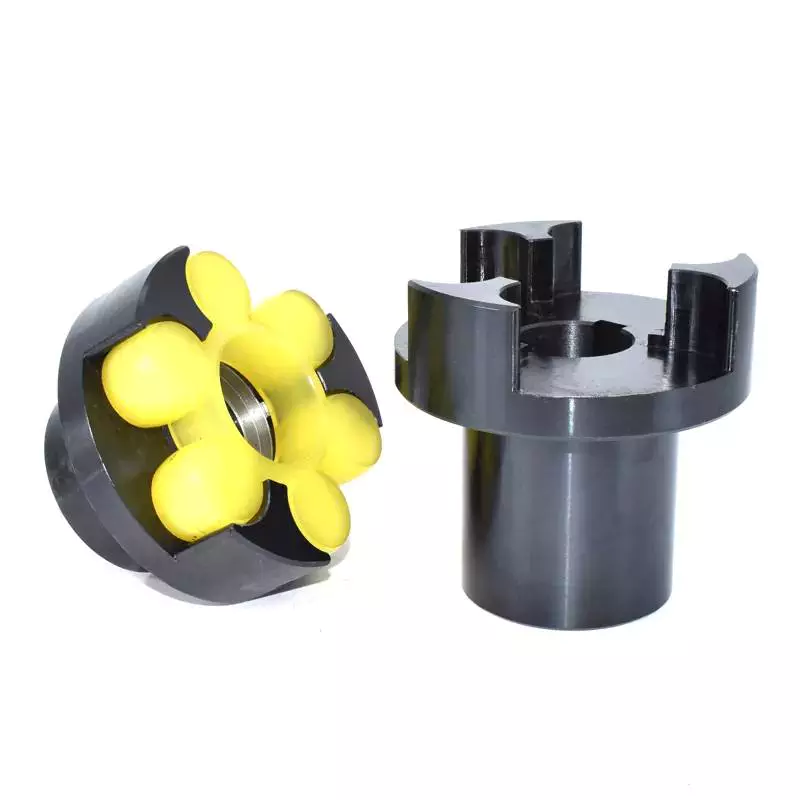Couplings play a critical role in connecting two shafts, allowing for the transmission of power and torque between them. They come in various types, each designed to suit specific applications and operational requirements. Rigid and flexible couplings are two common categories that differ significantly in their design, construction, and applications. This essay delves into the differences between rigid and flexible couplings, exploring their respective characteristics, advantages, and limitations.
Rigid Couplings:
Rigid couplings are mechanical devices designed to connect two shafts in a straight line without any flexibility. They provide a direct and solid connection between the shafts, ensuring a one-to-one transfer of motion and torque.
- Design and Construction:
- Rigid couplings are typically made of durable materials such as steel or cast iron.
- They consist of two halves, each attached to one of the shafts to be connected.
- These halves are joined together by bolts or other fastening mechanisms, ensuring a tight and secure fit.
- Advantages of Rigid Couplings:
- Accuracy: Rigid couplings maintain precise alignment between the shafts, ensuring accurate transmission of motion.
- High Torque Transmission: Due to their solid construction, rigid couplings are suitable for applications requiring high torque transmission.
- Simple Design: Rigid couplings have a straightforward design, making them easy to install and maintain.
- Limitations of Rigid Couplings:
- Lack of Misalignment Tolerance: Rigid couplings do not accommodate misalignments between shafts, which can lead to increased wear and vibration.
- Vibration Transmission: Since they don’t absorb shocks or vibrations, rigid couplings transmit these forces directly to connected equipment.
Flexible Couplings:
Flexible couplings are designed to provide a degree of flexibility between connected shafts. They compensate for misalignments, reduce shock loads, and absorb vibrations, offering advantages in applications where these factors are crucial.
- Design and Construction:
- Flexible couplings are made from materials that allow for some degree of flexing, such as elastomers (rubber, urethane) or metallic elements (spiral wound, bellows).
- They are capable of accommodating angular, parallel, and axial misalignments between shafts.

- Advantages of Flexible Couplings:
- Misalignment Compensation: Flexible couplings can compensate for shaft misalignments, reducing wear and tear on connected equipment.
- Vibration Damping: They absorb shocks and vibrations, preventing the transmission of these forces to connected components.
- Reduced Maintenance: The flexibility of these couplings can contribute to a longer lifespan for connected equipment by minimizing stress and wear.
- Types of Flexible Couplings:
- Elastomeric Couplings: These use elastomeric materials, such as rubber or urethane, to provide flexibility.
- Metallic Couplings: These use metal elements, such as springs, spiral wound, or bellows, to achieve flexibility.
- Limitations of Flexible Couplings:
- Lower Torque Capacity: Flexible couplings may have lower torque transmission capabilities compared to rigid couplings.
- Complex Design: Some flexible couplings can have a more intricate design, requiring careful installation and maintenance.
Application Considerations:
- Rigid Couplings Applications:
- Precision Machinery: Rigid couplings are suitable for applications where precise alignment and accurate torque transmission are crucial, such as in precision machinery and manufacturing equipment.
- Flexible Couplings Applications:
- Power Transmission: Flexible couplings find applications in power transmission systems where misalignments, shocks, and vibrations are common, such as in pumps, compressors, and HVAC systems.

Conclusion:
In conclusion, the choice between rigid and flexible couplings depends on the specific requirements of the application. Rigid couplings are ideal for situations where precision and direct torque transmission are paramount, while flexible couplings excel in applications where misalignments, shocks, and vibrations need to be mitigated. Understanding the characteristics, advantages, and limitations of each type allows engineers and designers to make informed decisions based on the demands of the given mechanical system. The ongoing evolution of materials and engineering technologies continues to enhance the performance and versatility of both rigid and flexible couplings, contributing to the efficiency and reliability of diverse industrial processes.
